Deep in the Australian outback, one of the world’s largest scientific experiments is being built – a “time machine” that is also capable of finding aliens.
It sounds like science fiction, but we’re sure the technology is legit.
“What we’re building here is basically a time machine “Because it allows us to look at that early dawn of the universe and understand how it evolved,” Dr Sarah Pearce told 7.30.
“This is about 300 million years after the Big Bang, when the first stars and galaxies began to shine.”
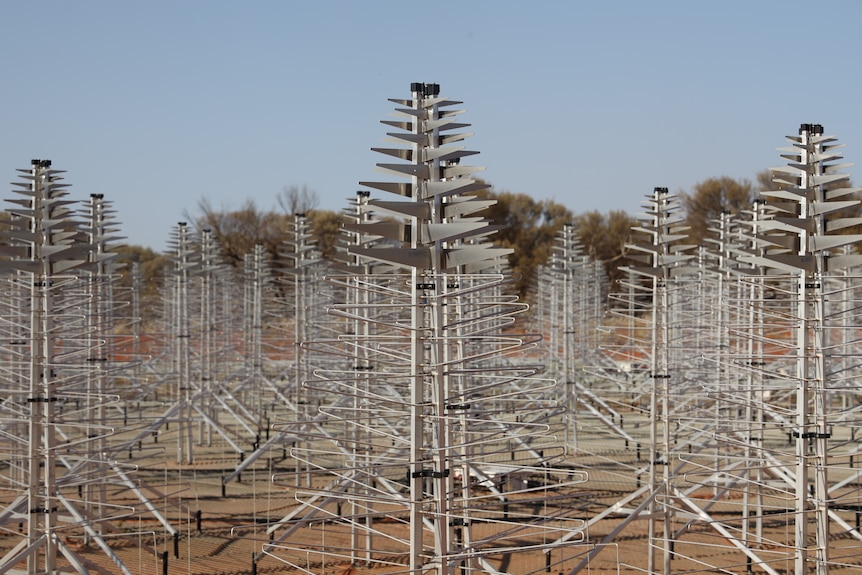
SKA-Low will be the largest radio telescope of its kind in the world. (ABC News: Tom Hartley)
Dr. Pearce is director of the SKA-Low telescope, a giant radio telescope consisting of 131,072 Christmas tree-shaped antennas designed to scan the darkest depths of the universe and expected to be fully operational by the end of this decade.
It will test Einstein’s theory of general relativity by investigating gravity around black holes.
It’s so sensitive that basically if ET had an iPhone, they’d find him.
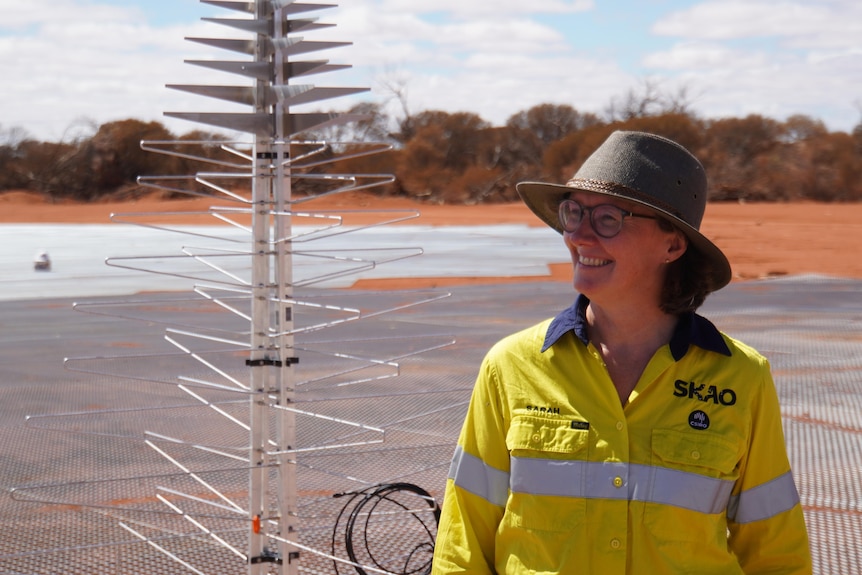
Dr. Sarah Pearce is director of the SKA-Low Telescope. (ABC News: Tobarak Al-Jroud)
“Because it is the most sensitive [telescope] “So far, if intelligent life exists in a different star system, for the first time we can detect leaks from their electronics.”
It answers one of the greatest questions mankind has ever asked: Are we alone in the universe?
Dr. Pierce doesn’t think we are.
Bigger is better
It’s hard to fathom the scale of the tools they’ll use to answer these big questions, especially in front of people.
By road, the drive from one end to the other can take hours, a distance of 74 kilometers as the crow – or local zebra finch – flies.
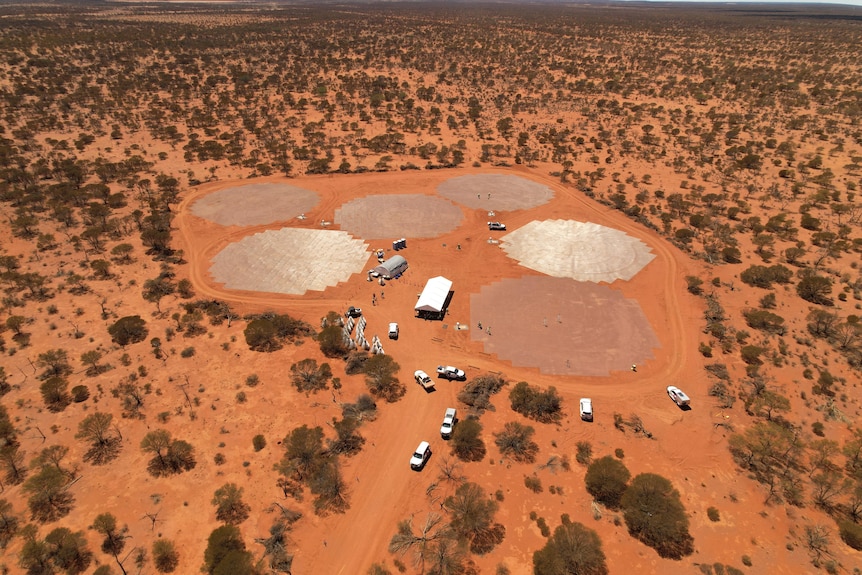
This telescope will consist of stations with antennas up to 74 km apart. (ABC News: Glyn Jones)
“It’s a bit like having a big telescope that’s 74 kilometers across,” Dr Pearce said.
Even when partially built, it will be the largest of its kind in the world.”
SKA-Low is one of two telescopes built by the SKA Observatory (SKAO), a global intergovernmental organization formed in 2021 with 16 member countries on five continents.
Another telescope called SKA-Mid – an array of 197 dishes – is spread over 150 km in a radio quiet zone in the northern Cape of South Africa.
It is estimated that construction will continue for the next decade at a cost of more than $2 billion – funded by member states.
In total, nearly 100 organizations in 20 countries, including Australia, which is one of its founding members, have contributed to the design and development of the SKA project.
512 “stations”, each with 256 antennas, and a “core” just over 500 meters in diameter will survey the sky. A set of on-site and off-site supercomputers process the data.
SKA-Low is estimated to be 1,000 times more sensitive than the telescope that produced this image – the first color radio image of the cosmos.
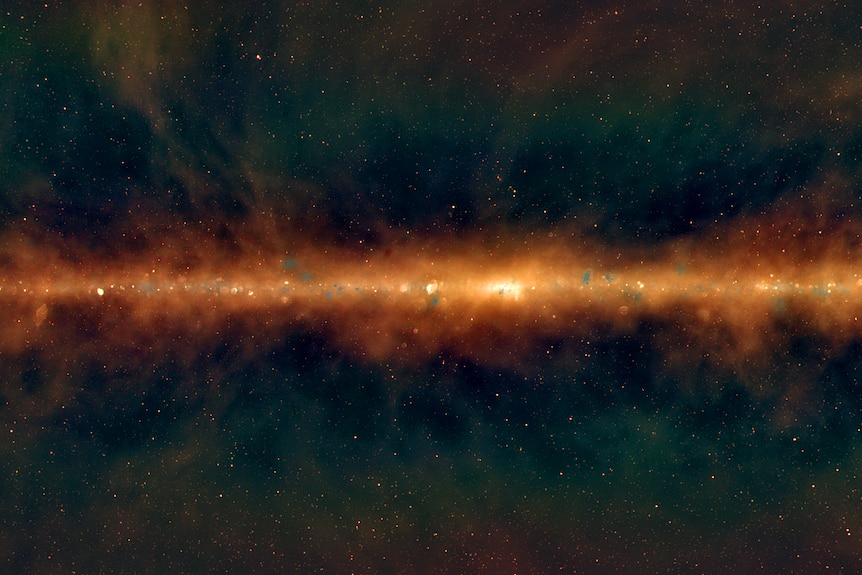
A view of the Milky Way from the Murchison Wide Field Array. (has been supplied)
“In that [image] Dr Natasha Hurley Walker told 7.30: “You see hundreds of thousands of radio galaxies, supermassive black holes, millions of light years from us.
The renowned astronomer made the discovery in 2016 using the Murchison Wide Array (MWA), a nearby radio telescope with a network of 4,000 spider-like antennas.
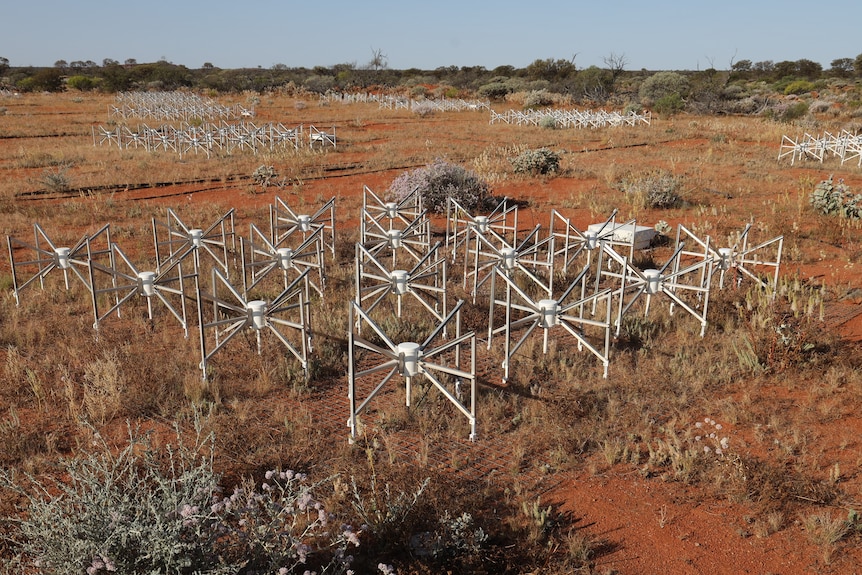
The Murchison Wide Field Array is one of two other telescopes currently operating in Wajari. (ABC News: Tom Hartley)
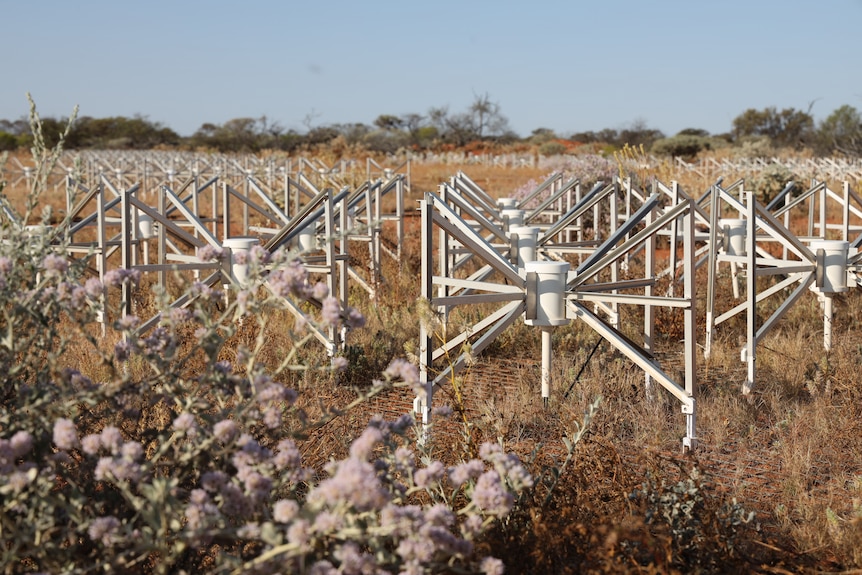
It consists of 4000 spider-like antennae. (ABC News: Tom Hartley)
“They’re looking at things millions to billions of light-years away, which means we’re looking back millions to billions of years in time,” he said.
“Before doing that survey, we didn’t know what the sky looked like at those frequencies. It’s really like navigating into the unknown.”
The MWA was one of two radio telescopes built in Australia to prove the claim of SKA-Low.
Another one is called ASKAP – it consists of 36 vessels.
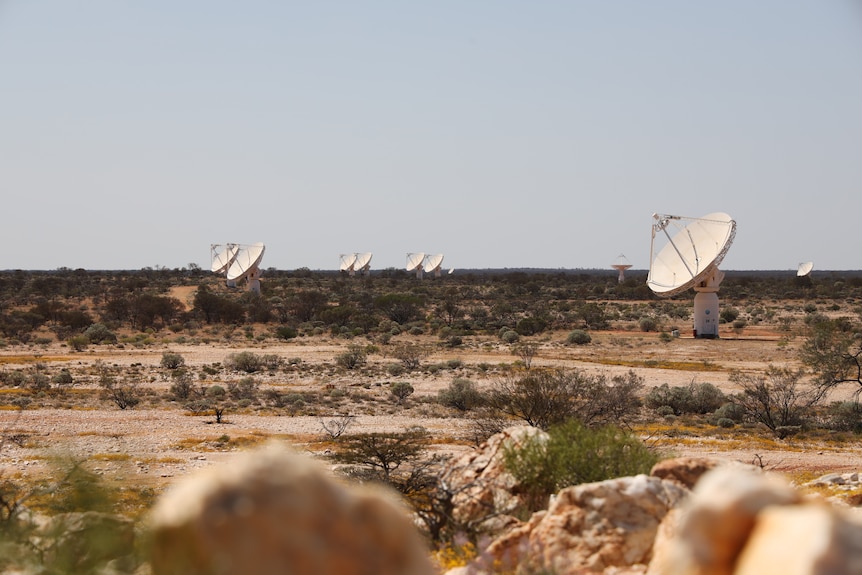
ASKAP is a radio telescope with 36 dishes that work as a single dish. (ABC News: Tom Hartley)
“It’s designed and built here in Australia, and it’s a first, in what it does,” ASKAP chief engineer Brett Hiscock told 7.30.
“Instead of just pointing at one point in space, it actually makes 36 beams, so it looks at the sky faster because it’s looking at 36 places at once.”
“[In] In one recent survey, they found 1 million new galaxies.”
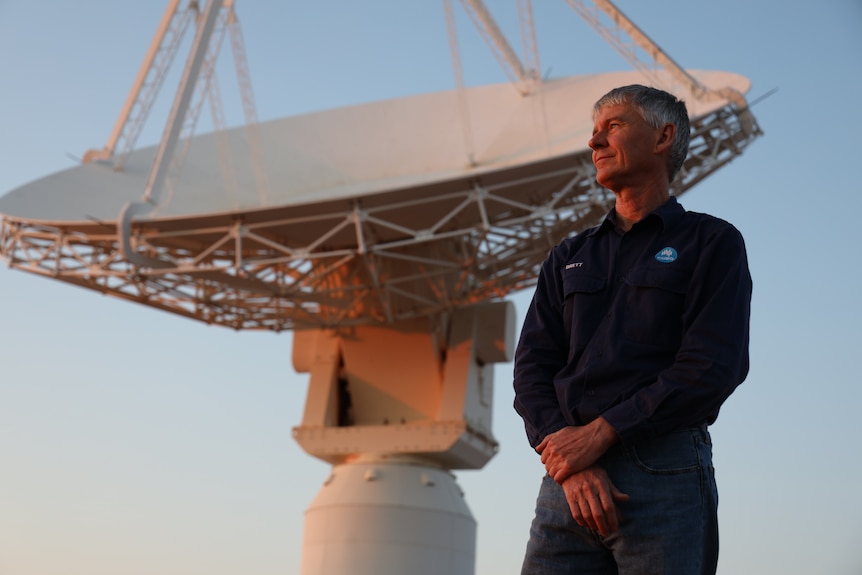
Brett Hiscock is ASKAP’s lead engineer. (ABC News: Tom Hartley)
Mr Hiscock explained to 7.30 that radio waves are being used to help map the universe.
It’s not something you look at, it’s using radio waves that come from objects like black holes or just gases in space, and we’re collecting those radio waves and processing that information to produce contour maps that scientists study. They will and will strive for space,” he said.
Wajari country
Building something so big and sensitive required a lot of space and (radio) silence.
You’ll find all 700 kilometers north of Perth in the Wajari Country, at Inyarrimanha Ilgari Bundara, CSIRO’s Murchison Radio-Astronomy Observatory.
Rebecca Wheadon, director of the CSIRO observatory, said: “Inyarrimanha Ilgari Bundara is actually slang for ‘sharing the sky and the stars’.
“These telescopes bear the Wajarri name, and when new discoveries are made, they will bear the Wajarri name, so wherever we can look to share the beautiful culture.”
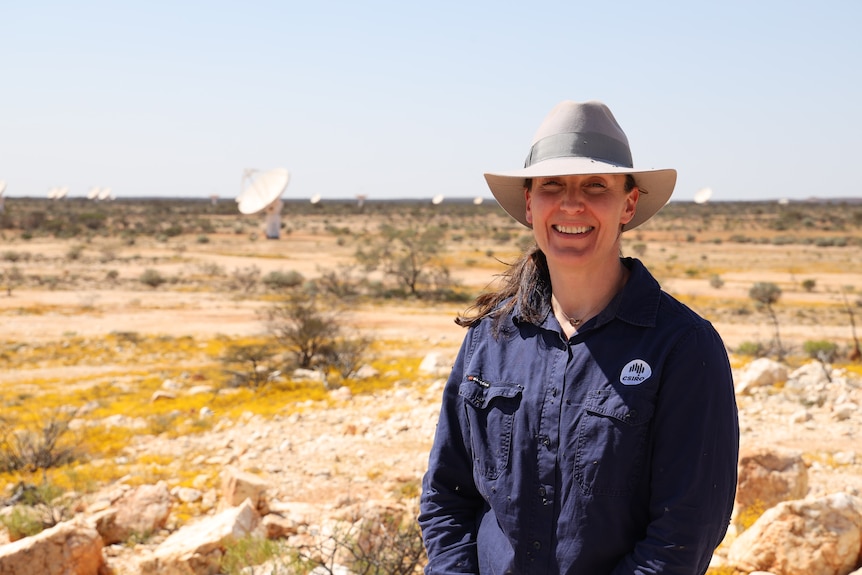
Rebecca Weedon is director of the CSIRO observatory. (ABC News: Tom Hartley)
Negotiations, including a heritage review with the Wajarri Yamaji – traditional landowners and native title holders – took years before construction began.
“To reach this agreement, we spent six years together on the ground to find a suitable location for some of the telescopes that are now being built,” Ms Whedon said.
“One of the things that has been special for us is that we share a language and a culture, and we are always looking for ways to continue to walk together on land,” he said.
“It’s our best collaboration ever,” Gail Simpson told 7.30.
“Connecting to the land is one thing that’s great, but doing heritage surveys and conservation from there is one of the main things.
“If they want to go through it like the mining companies and destroy everything, there will be nothing left for us.”
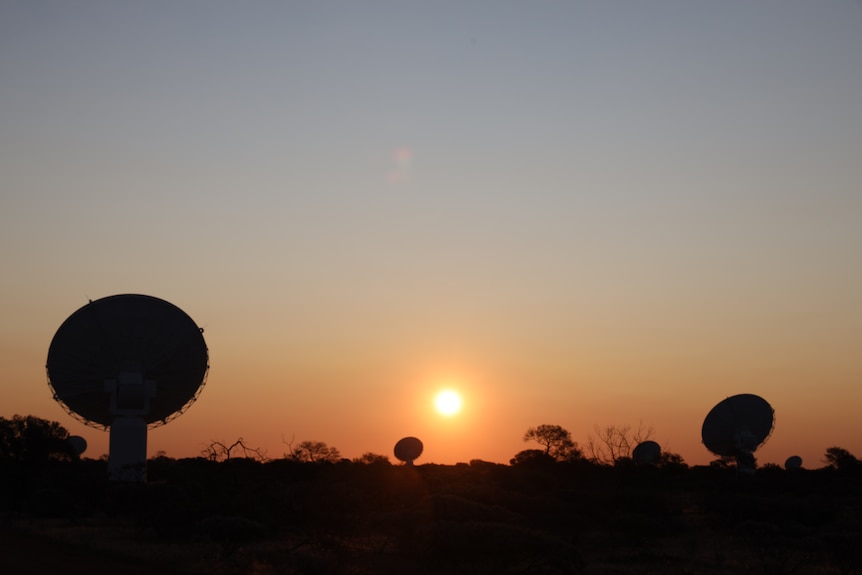
The ASKAP telescope was designed and built in Australia. (ABC News: Tom Hartley)
SKA-Low director Dr Sarah Pearce said she was “extremely grateful” for permission to use the pitch.
“We’ve been working in deep collaboration with CSIRO and Wajarri, it’s a really important partnership for us to show how these advanced technologies can be done in partnership with First Nations people,” he said.
“It filled my heart”
Most of the field technicians—part of a workforce of more than 200—who install SKA-Low antennas are proud of Wajarri.
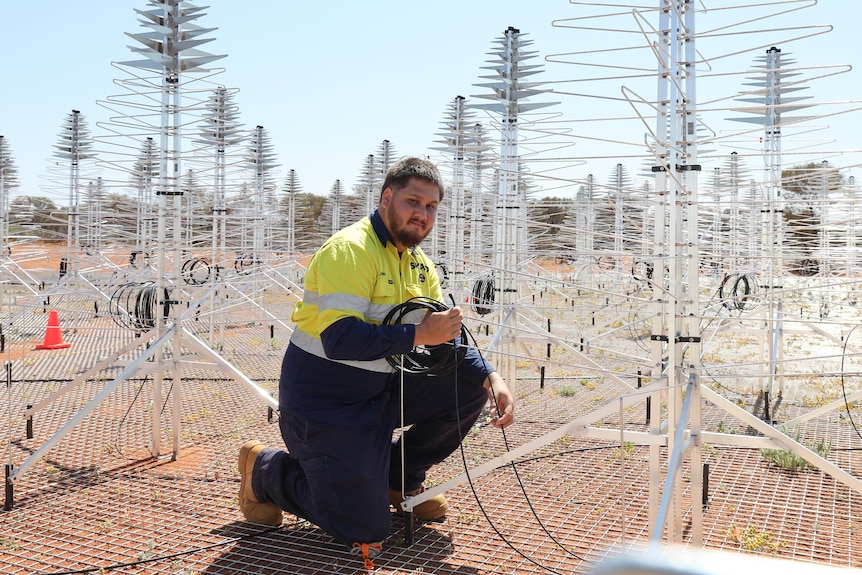
Photo of Lucky Ronan working on the SKA-Low antennas. (ABC News: Tom Hartley)
Field technician Lucky Ronan told 7.30: “I feel special working on land where my ancestors have been and not everyone can say they are working in the middle of nowhere.
“People look outside and see that it’s a desolate place, there’s nothing outside, but what I see is an abundance of life, trees, native animals, that’s very important to me and I think very It’s beautiful.”
The moment he was working on the site, he discovered that one of ASKAP’s telescopes was named after his grandfather – a prominent member of the community.
When he saw the dish for the first time, it filled him with joy.
“It’s something I can’t really explain, but it kind of fills my heart,” Mr Ronan told 7.30.
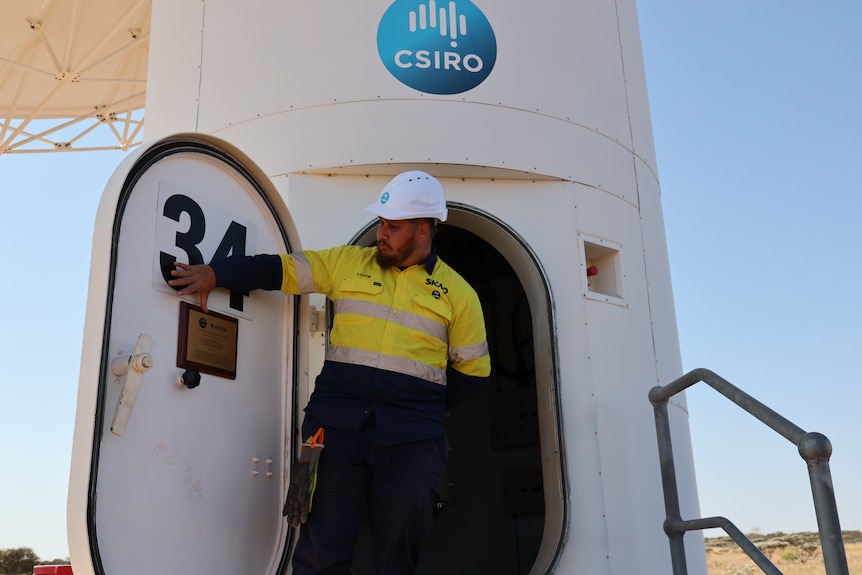
Lucky Ronan’s grandfather was a prominent member of the community. (ABC News: Tom Hartley)

For Lucky, working here has connected him to his ancestral past. (Credit: CSIRO/Brett Hiscock)
“How involved my grandfather was in the community makes me encourage young Indigenous kids to come out, reconnect with the culture and hopefully experience the same feelings I have today.
This is a very beautiful feeling.
“It’s like a longing that’s being filled, and it’s not quite filled, I think it’s just the beginning, and I’m excited to see where it goes from here.”
watch 7.30Monday through Thursday at 7:30 p.m ABC iview and ABC TV
#Leaking #electronics #giant #telescope #Australia #answer #humanitys #biggest #questions